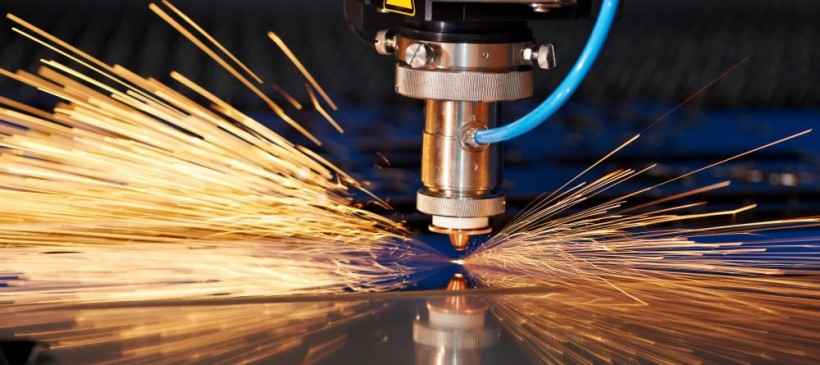

Laser Cutting: Steel and Aluminum
One of the most talked about and interesting ways to cut materials is with laser cutting.
Laser cutting often catches public eye and interest because of the futuristic reputation surrounding lasers. But is it exactly how they portray it in sci-fi movies?
How Does Laser Cutting Work?
A laser cutting machine fires a concentrated stream of photons onto a precise location on a material puncture it, and traces the desired shape and design of the workpiece to create the final product.
What Types of Lasers Are There?
There are many different kinds of lasers used in material cutting.
CO2 Laser
These lasers use carbon dioxide as a gas medium for for focusing light to make powerful cuts on thick material. It’s high-power continuous beam allows for an extremely high cutting strength. The discharge from the laser contains carbon dioxide mixed with smaller amounts of nitrogen, helium, and hydrogen. CO2 lasers are primarily used for industrial cutting.
The Neodymium Laser (Nd)
The Nd lasers use a solid crystal to focus light onto the workpiece. This continuous or rhythmic infrared beam can be enhanced using secondary equipment like pumping lamps or diodes.
The Yttrium-Aluminum-Garnet Laser (Nd:YAG)
The Nd:YAG laser is similar in style to the Nd laser, but differ in application and use. The Nd laser is used for boring and instances of high energy but low repetition, whereas the Nd:YAG is used in low-power instances like cutting sheet metal and ceramics.
Fiber Laser
These are solid state lasers, as opposed to gas or liquid. A base laser is produced and then amplified within a glass fiber. Fiber lasers are ideal for cutting reflective metals because of their small spot size.
What Are the Benefits of Laser Cutting?
Laser cutting is very unique and distinctly different from other cutting methods.
Here are a few things that might make laser cutting the right choice for your project:
- Non-Contact Cutting Process
- Minimal Product Damage
- Low Power Consumption
- Safe and Contained Cutting Process
- Tight Cutting Tolerance
- Automated to Maximize Precision
- Can Cut a Variety of Materials
What’s The Deal with Steel?
Steel materials are often very thick and require high power cutting methods. This means that they are usually cut with CO2 lasers since they have the capacity to pump out higher power cuts than other lasers.
In general, the thicker the steel sheet, the more power you’ll need.
Laser Cutting shines above other mechanical cutting processes because it can produce very small hole sizes, sometimes as low as a fifth of the thickness of the steel. Hole sizes can go even smaller with fiber laser cutting.
Nd:YAG lasers are usually incapable of cutting steel at any thickness around 20 millimeters or higher, but can be paired with an optical fiber enhancement and an oxygen assist gas mechanism to enable them to cut thicker steel material.
How About Aluminum?
Laser cutters have a hard time working with light-reflective and heat-conductive metals like aluminum and stainless steel.
There may be a way around these limitations by coupling high power laser beams with compressed gas technology.
Nitrogen and oxygen assisted laser cutting machines can shape aluminum and stainless steel at relatively high capacities with great results.
Unfortunately, higher electricity and power consumption along with the cost of adjunct equipment used to achieve these results may increase costs so high that it outweighs the worth of the cutting technique.
To learn more about other cutting techniques, or get assistance with a project you’re working on, contact a professional like Pioneer Rubber and Gasket.
To find out more about how Pioneer Rubber and Gasket can help you, request a quote for more information, call us at 1-800-530-9051, or reach out to us at sales@pioneerrubber.com.
Since 1977, Pioneer Rubber and Gasket has provided the Southeast with assured quality and dependable service. No matter the size of your project or order, we work with you to deliver your material needs.

